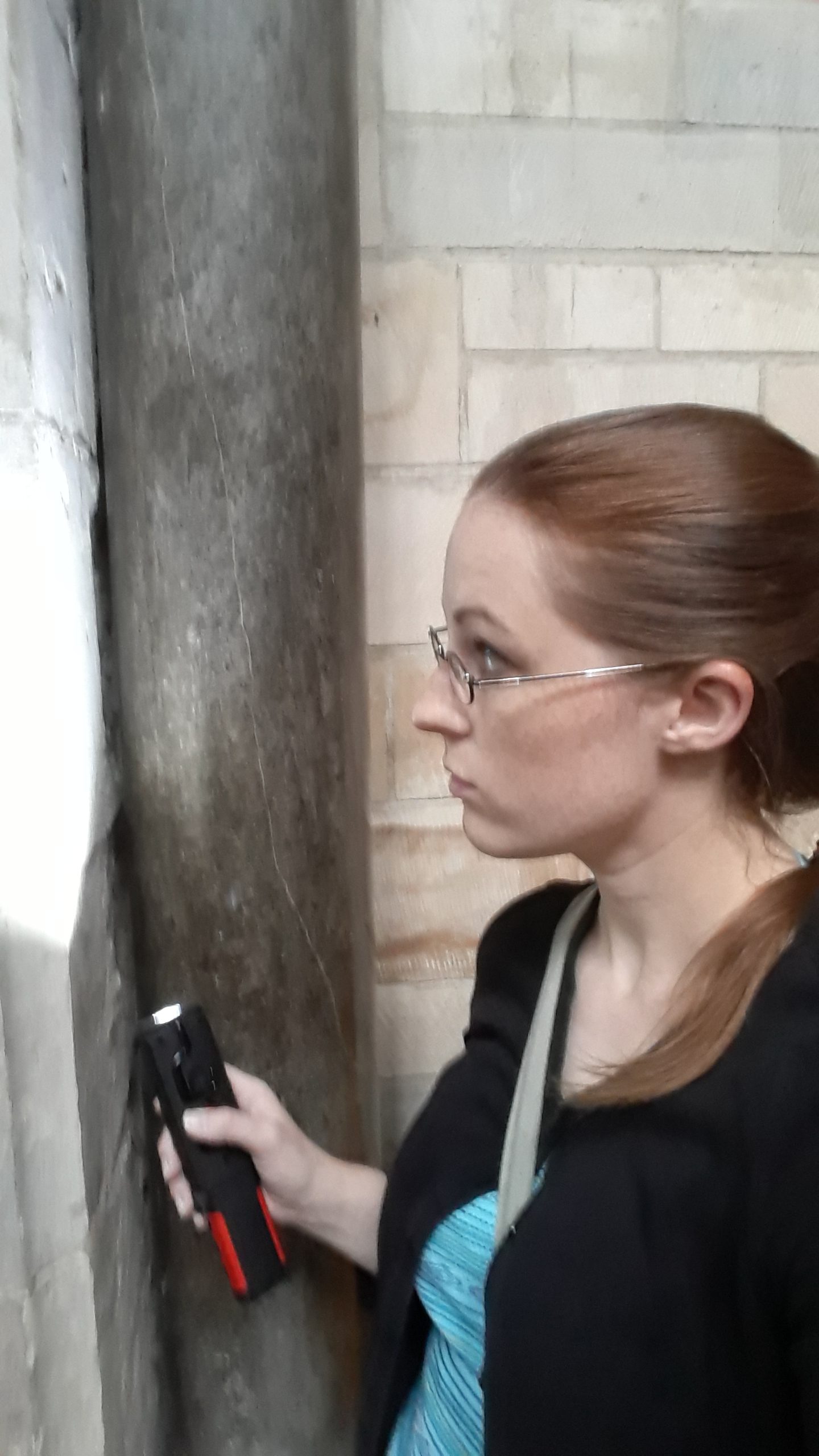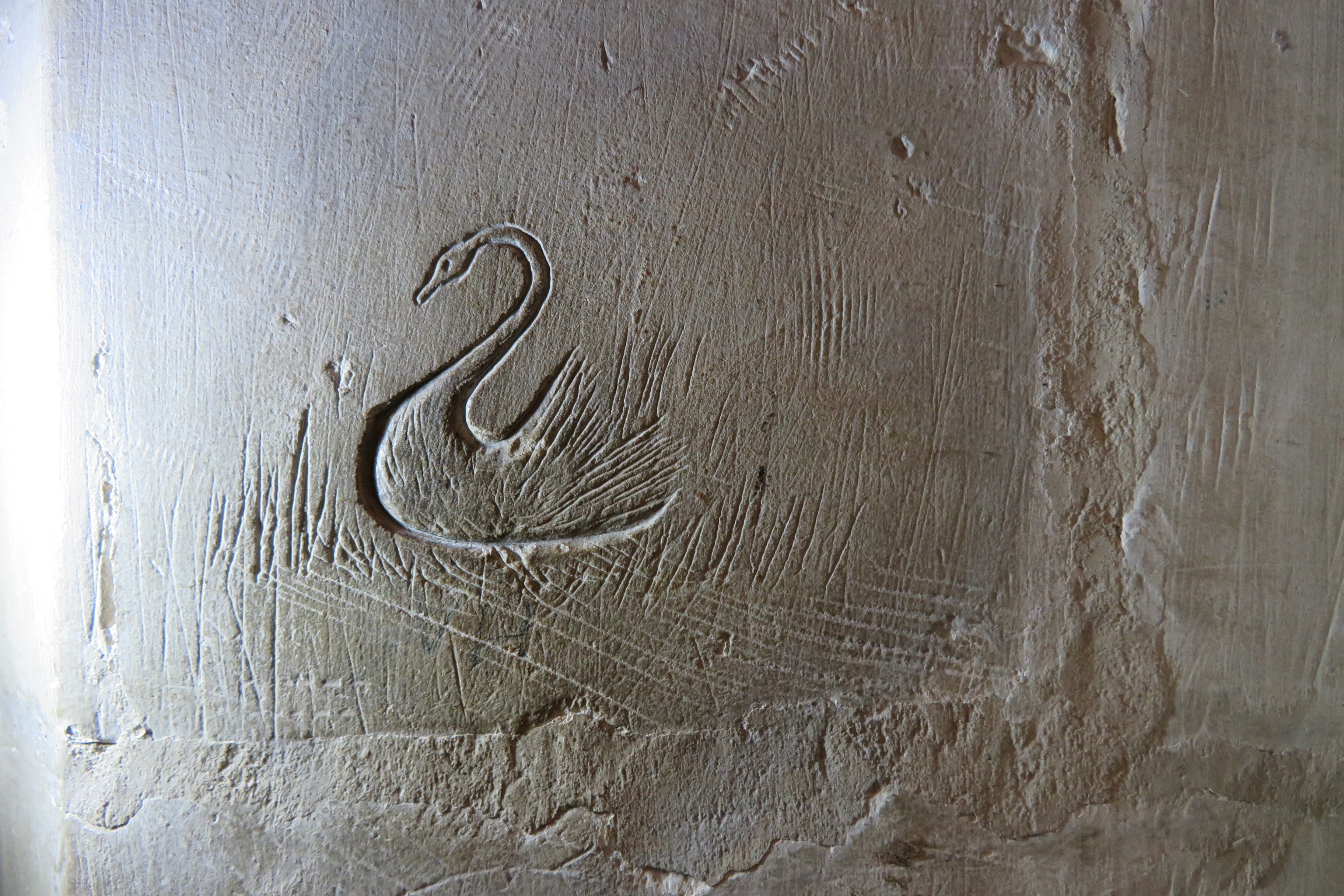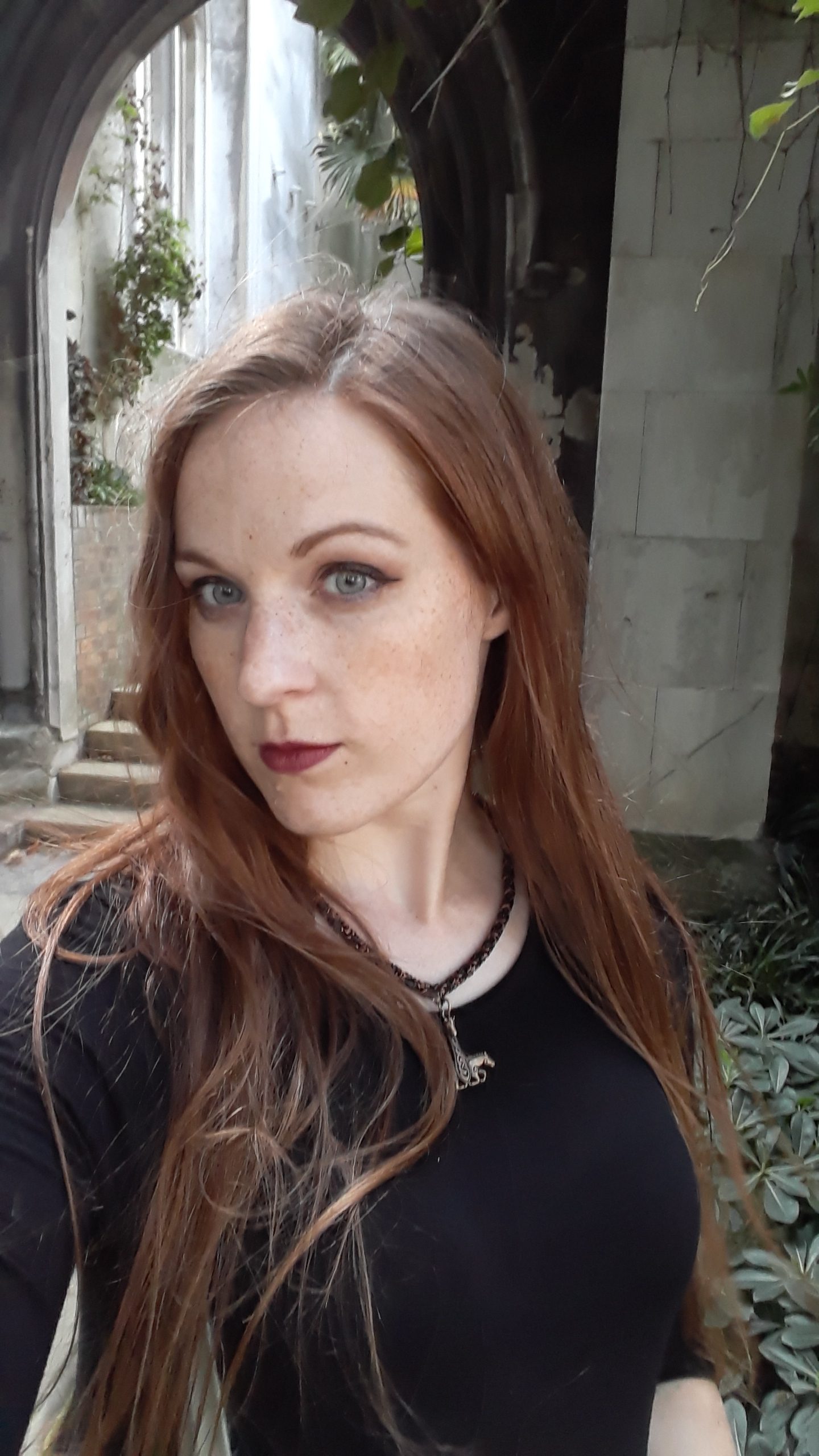
Hello, I’m Crystal and I stare at walls. No really, I spend hours in small buildings shining light on walls and recording what I see – I’m an archaeologist who specializes in medieval graffiti. I didn’t plan to be an archaeologist; I just kind of ended up here and happen to love it.
I first learned of medieval graffiti when I was visiting old churches on a study break during my MA in London. Initially, I was drawn to the scavenger hunt aspect of graffiti – that I could find some cool things that no one else had noticed, or if their existence was posted somewhere that I could follow the directions, see them for myself, and check them off my personal list. Eventually, this gave way to a deeper interest in the reasons behind the graffiti and inscriptions I was finding. I wanted to understand their role in medieval society and be able to take that knowledge to breathe life into the distant past. I started to look past the big beautiful inscriptions and focus on the more common and mundane – understanding that sometimes a scratch was just a scratch, but that other time a scratch on the wall had a meaningful purpose like protection or remembrance.

Graffiti became a doorway to understanding and tangibly connecting with the average person of late medieval and early modern society – the more marginalized and forgotten individuals who only show up as a blip on the historical records’ radar if they’re lucky. While staring at a stone, I’ve witnessed a whole culture–gossip in Latin on the walls, pleas for remembrance during a plague, a whole host of animals and faces, staves of music carefully laid out, building plans, and even reminders to pray.
My time at Hope set the foundation for the work I do today. While much of what I do starts out in the field with observing, recording, and cataloging graffiti, the real work takes place behind the scenes when I get back from site visits and have to ‘do something’ with the data. Researching building histories through primary sources, finding corresponding secondary sources, and of course writing all make up the part of my work that people actually see – publications and presentations. Not to sound like a cliché, but HIST 140 (the class where Turabian, editing, rewriting, and source selection is taught) has ended up being my life-saving toolkit all too often. I still have Turabian on my shelf. I still read my papers out loud and edit them viciously. I still get notoriously picky about what I submit.
Hope also prepared me for the odd blend of history and technology that I use to document, sort, and analyze my finds. My minor in computer science – where I learned basic database construction and design – has been crucial to storage and analysis of my graffiti data as I have thousands of images that need to be organized and easily accessed. At the time I wasn’t sure if having a history major and computer science minor would really be useful and it turns out the blend of humanities and science education I received has been perfect for my career in archaeology.
When I graduated with my history degree I never thought I would end up an archaeologist, much less a specialist in historic graffiti. There was no grand plan there I must admit–I just found something I loved and used the tools I had to make it work. My work has taken me to some amazing places like behind the scenes at the Tower of London and the roof of Southwark Cathedral in search of inscriptions and their stories. It’s hard work, and in some cases, I’ve had to play catch up in terms of archaeological education, but at the end of the day if you want to do something badly enough, I’ve learned you can figure it out, make it work and excel.

After spending nine weeks in Europe researching churches and cathedrals this summer, I’m looking forward to a number of new projects. Next year I’ve been booked to speak for the second year in a row in central London, and following that I will begin projects on graffiti in two Hertfordshire churches. I’m hoping that a proposed project in Finland will also be on my list next year. Finally, the beginnings of a PhD in the UK are on the horizon for next autumn. I never thought I’d get this far but I’m excited to see where I end up going.

